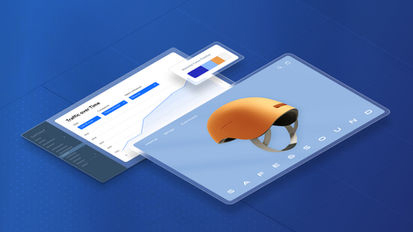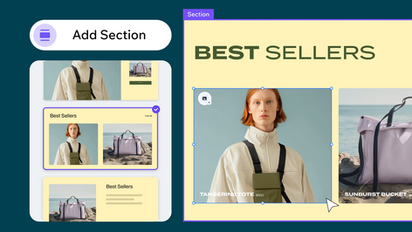Web Design Course Online
The Ultimate Guide to Web Design Course Online
Web Design Course Online
In the digital age, having a strong online presence is essential for artists looking to showcase their work and connect with new audiences. A well-designed website can serve as a virtual gallery, allowing artists to display their artwork and tell their story to the world. However, building a website from scratch can be a daunting task, especially for those without technical expertise or a large budget. Fortunately, there are a number of free site builders available that make creating a professional-looking website easier than ever.

Web Design Course Online Checklist
Web Design Course Online
Web app development involves creating software programs that are accessed through a web browser. Unlike traditional desktop applications that are installed on a user’s device, web apps are hosted on a server and can be accessed from any device with an internet connection. This makes them highly versatile and convenient for users who need to access their information on-the-go.
The process of web app development starts with defining the project requirements and objectives. This involves understanding the target audience, the goals of the app, and the features that will be included. Once the requirements have been gathered, the next step is to create a wireframe or mockup of the app to visualize the layout and design.
After the wireframe has been approved, the development team can start coding the app. Web apps are typically built using a combination of front-end and back-end technologies. The front-end is responsible for the user interface and user experience, while the back-end handles the server-side logic and database management.
For the front-end development, developers often use HTML, CSS, and JavaScript. HTML (Hypertext Markup Language) is used to create the structure of the web page, while CSS (Cascading Style Sheets) is used to style and layout the content. JavaScript is used to add interactivity and dynamic elements to the app, such as animations and form validation.
In addition to these core technologies, developers may also use frameworks and libraries such as Angular, React, or Vue.js to streamline the development process and enhance the functionality of the app. These tools provide pre-built components and modules that can be easily integrated into the app, saving time and effort for the developers.
On the back-end side, developers use server-side languages such as Node.js, Ruby on Rails, or Python to handle the business logic of the app. These languages allow developers to create APIs (Application Programming Interfaces) that communicate with the front-end and database, enabling data to be stored, retrieved, and manipulated.
Databases are an essential component of web app development, as they store and manage the app’s data. Common database systems used in web development include MySQL, MongoDB, and PostgreSQL. Developers use SQL (Structured Query Language) to interact with the database and perform queries to fetch and update data.
Once the front-end and back-end components have been developed, the next step is to test the app for bugs and performance issues. Quality assurance (QA) testing involves checking the app’s functionality, usability, and security to ensure it meets the project requirements and user expectations.
After the app has been thoroughly tested, it is ready for deployment. Web apps are typically hosted on a web server or cloud platform, such as AWS or Azure. This allows users to access the app through a URL in their browser, without needing to install any software on their device.
Here are some of the top web design trends to watch out for in 2021:
1. Dark Mode:
Dark mode has been a popular trend in web design for the past few years, and it continues to gain momentum in 2021. Dark mode not only looks sleek and modern but also reduces eye strain and improves readability in low-light environments. Many websites now offer a toggle switch that allows users to switch between light and dark modes based on their preference.
2. Neumorphism:
Neumorphism is a design trend that combines elements of skeuomorphism and flat design to create a soft, realistic look. It involves using subtle shadows, highlights, and gradients to make elements appear three-dimensional and tactile. Neumorphic design can create a more immersive and engaging user experience, making websites feel more interactive and intuitive.
3. Minimalism:
Minimalism has been a popular design trend for years, and it continues to be relevant in 2021. Clean and simple designs with plenty of white space help focus users’ attention on key elements and create a sense of calm and balance. Minimalist websites load faster, are easier to navigate, and convey a sense of sophistication and professionalism.
4. Custom Illustrations:
Custom illustrations are a great way to add personality and character to a website. They can help showcase a brand’s unique identity and differentiate it from competitors. Custom illustrations can be used to explain complex concepts, guide users through the website, or simply add a touch of whimsy and creativity to the design.
5. Asymmetric Layouts:
Asymmetric layouts break away from the traditional grid-based designs and create a more dynamic and visually interesting website. They can help draw attention to specific elements, create a sense of movement and flow, and make the design more memorable and engaging. Asymmetric layouts can be challenging to implement but can result in a truly unique and striking website.
6. 3D Elements:
3D elements add depth and dimension to a website, making it more visually appealing and immersive. They can be used to create interactive product showcases, engaging animations, or eye-catching backgrounds. With advancements in CSS and JavaScript, 3D elements are becoming easier to implement and can help create a more memorable and engaging user experience.
7. Bright Colors:
Bright and bold colors are being used more frequently in web design to grab users’ attention and create a strong visual impact. Vibrant colors can help convey brand personality, evoke emotions, and create a sense of energy and excitement. When used strategically, bright colors can help highlight key elements and guide users through the website.
8. Micro-animations:
Micro-animations are small, subtle animations that add interactivity and delight to a website. They can be used to draw attention to important elements, provide feedback to user actions, or create a sense of continuity and flow. Micro-animations can help create a more engaging and intuitive user experience and make the website feel more dynamic and alive.
9. Voice User Interface (VUI):
With the rise of voice assistants like Alexa and Siri, voice user interfaces are becoming more prevalent in web design. VUI allows users to interact with the website using natural language commands, making navigation easier and more intuitive. Integrating VUI into a website can help reach a wider audience, improve accessibility, and offer a more convenient user experience.
10. Accessibility:
Accessibility is an important consideration in web design, ensuring that websites are usable by people of all abilities. In 2021, there is a growing focus on creating accessible websites that adhere to WCAG (Web Content Accessibility Guidelines) standards. This includes features like alt text for images, proper heading structures, keyboard navigation, and color contrast ratios. By designing with accessibility in mind, businesses can reach a larger audience and demonstrate their commitment to inclusivity and diversity.

Web Design Course Online FAQ
Web Design Course Online
In today’s digital age, having a visually appealing and user-friendly website is crucial for the success of any business. A well-designed website can help attract new customers, build credibility, and increase conversion rates. However, designing a website is not as simple as it may seem. It requires a strategic and systematic approach to ensure that the final product meets the needs and expectations of both the business and its target audience. In this article, we will discuss the website design process in detail, outlining the key steps involved in creating a successful website.
Step 1: Define the Purpose and Goals
The first step in the website design process is to clearly define the purpose and goals of the website. This involves identifying the target audience, understanding their needs and preferences, and determining the desired outcomes for the website. For example, is the website meant to generate leads, drive sales, provide information, or showcase products and services? By having a clear understanding of the purpose and goals of the website, you can better tailor the design and content to meet these objectives.
Step 2: Conduct Research
Once the purpose and goals of the website have been defined, the next step is to conduct research. This involves analyzing the competition, researching industry trends, and gathering insights into the preferences and behaviors of the target audience. By conducting thorough research, you can gain a better understanding of what works and what doesn’t in your industry, helping you make informed design decisions.
Step 3: Create a Wireframe
After conducting research, the next step in the website design process is to create a wireframe. A wireframe is a visual representation of the layout and structure of the website, showing the placement of various elements such as navigation menus, headers, footers, and content sections. Creating a wireframe allows you to plan the overall design and functionality of the website before moving on to the visual design phase.
Step 4: Design the Visual Elements
Once the wireframe has been finalized, the next step is to design the visual elements of the website. This involves creating a visually appealing and consistent design that reflects the brand identity and resonates with the target audience. Elements such as color scheme, typography, imagery, and layout are carefully considered to create a cohesive and attractive design that conveys the desired message and engages users.
Step 5: Develop the Website
After the visual design has been approved, the next step is to develop the website. This involves coding the design into a functioning website using HTML, CSS, and other programming languages. During the development phase, the website is tested for functionality, responsiveness, and compatibility across different devices and browsers to ensure a seamless user experience.
Step 6: Test and Optimize
Once the website has been developed, it is essential to test and optimize its performance. This involves conducting usability tests to identify any usability issues, testing load times to ensure fast page speeds, and optimizing the website for search engines to improve visibility and accessibility. By testing and optimizing the website, you can ensure that it meets the needs and expectations of users, leading to better engagement and conversions.
Step 7: Launch and Monitor
The final step in the website design process is to launch the website and monitor its performance. This involves deploying the website to a live server, promoting it to the target audience, and tracking key metrics such as traffic, engagement, and conversions. By monitoring the performance of the website, you can identify areas for improvement and make informed decisions to optimize its effectiveness over time.


